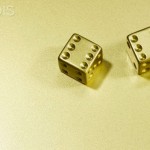Before starting our discussion about predictability, let me tell you a story. Suppose that you have a metal spring. You put it on the table and play with it by applying some tension or torsion, pressing it between your fingers and sometimes throwing it on the table.
After you play too much with the spring something extraordinary happens. spring moves away from you with a worm-like movement. The spring pushes himself forward by stretching and contracting its body and hides somewhere behind a book.
Seems it was not a real spring. It was a spring-like living creature! This is a simplified statement of my idea behind the concept of predictability and connection of this concept with being alive.
Taking a look at the literature on mind and free will, you see the most examples and metaphors about predictability revolves around predictability of physical movements. Same holds true for mine. But soon we will extend it to the other aspects of predictability.
When an object becomes absolutely predictable for us, it’s not considered as a living entity anymore. Physical movements of water are predictable. So it’s not considered a living thing. Movements of a fish are not predictable. So it’s kind of living entity!
The idea of predictability of behavior in living things is easy to grasp yet hard to define. As Dale states four decades ago:
An important feature of the response made to stimuli by living things is that in general the magnitude of the response has no obvious relation to the intensity of the stimulus.
Taking a look at the general literature, seems that without being seriously criticized, we can consider unpredictability and randomness as similar or same concepts. As Patrick Suppes states in his book called Probabilistic Metaphysics:
Phenomena that we cannot predict must be judged random.
In our daily talks, such a definition seems a bit radical. We are not able to predict stock market movement, however, no-one would be happy if you call the market movement as a random walk. Malkiel‘s book Random Walk Down Wall Street, caught the attention of the great stock market players and individual investors, but investors are still asking expensive consultants to help them with selecting an above average portfolio based on past performance of them.
The same story holds true for destiny of a marriage or result of a surgery and many other life incidents.
But taking a second look at the randomness definition shows that we have missed the context of the statement.
Are we trying to predict a single behavior or the pattern of behavior over time? If we flip a coin for 1000 times would be easy to predict that it will land head-side-up for about 500 times. But can you have any prediction with the same certainty if I have just one chance to toss the coin? Sure not.
Therefore, we must clearly define our scope of the study and boundary of the system before making any judgment about predictability.
So, let me state an oversimplified definition of unpredictability at this stage:
An entity can be considered unpredictable if giving the same history of states and unlimited time to experiment, still be impossible to predict the response to the same stimulus within a predefined tolerance.
This is the place where the real story begins. There are some obvious and many hidden assumptions in the above definition. Not only about scope and the boundary, but also about observer and stimuli. Back to Wittgenstein’s ruler metaphor mentioned before, here’s the challenge. We are unreliable rulers trying to measure the table. But let’s try to do so.
I have continued this topic with a brief look at the concept of randomness.





